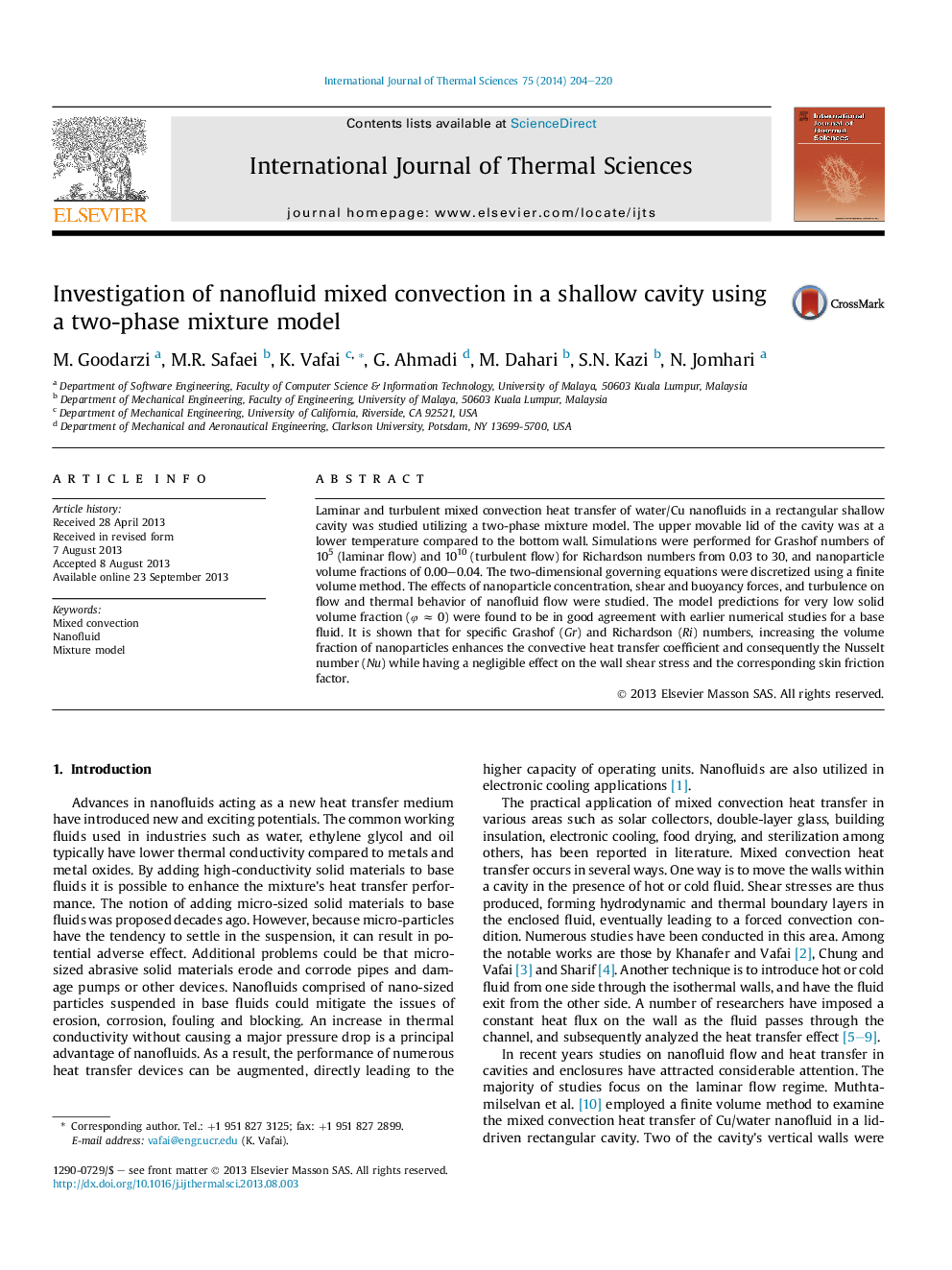| Article ID | Journal | Published Year | Pages | File Type |
|---|---|---|---|---|
| 669508 | International Journal of Thermal Sciences | 2014 | 17 Pages |
Abstract
Laminar and turbulent mixed convection heat transfer of water/Cu nanofluids in a rectangular shallow cavity was studied utilizing a two-phase mixture model. The upper movable lid of the cavity was at a lower temperature compared to the bottom wall. Simulations were performed for Grashof numbers of 105 (laminar flow) and 1010 (turbulent flow) for Richardson numbers from 0.03 to 30, and nanoparticle volume fractions of 0.00-0.04. The two-dimensional governing equations were discretized using a finite volume method. The effects of nanoparticle concentration, shear and buoyancy forces, and turbulence on flow and thermal behavior of nanofluid flow were studied. The model predictions for very low solid volume fraction (Ï â 0) were found to be in good agreement with earlier numerical studies for a base fluid. It is shown that for specific Grashof (Gr) and Richardson (Ri) numbers, increasing the volume fraction of nanoparticles enhances the convective heat transfer coefficient and consequently the Nusselt number (Nu) while having a negligible effect on the wall shear stress and the corresponding skin friction factor.
Related Topics
Physical Sciences and Engineering
Chemical Engineering
Fluid Flow and Transfer Processes
Authors
M. Goodarzi, M.R. Safaei, K. Vafai, G. Ahmadi, M. Dahari, S.N. Kazi, N. Jomhari,
